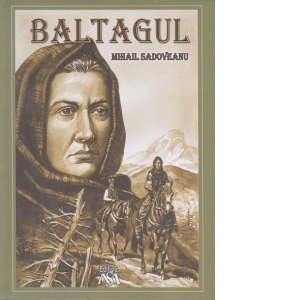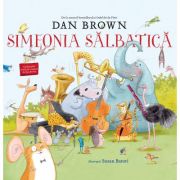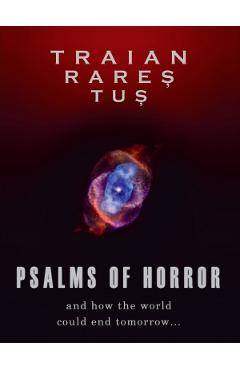- Informatii telefonice:(+40) 748 400 200
Aspects of Archaic Medicine. Human and Animal Trephination on the territory of Romania | Alexandra Comsa
Cod intern: xsales_1389497Producator: Cetatea de Scaun
Vizualizari: 31 / Achizitii: 18
Stoc: In stoc
Pret: 35.0 RON
Acest produs este publicat in categoria Librarie la data de 15-03-2025: 10:03 si vandut de Carturesti. Vanzatorul isi asuma corectitudinea datelor publicate. ( alege finantarea potrivita )
-
Produs cu garantie
-
Livrare direct din stocul fizic al Carturesti
-
Retur gratuit minim 14 zile de la data achizitiei
The specialized literature often provides examples of trepanned human skulls. They are usually spectacular, as people are amazed to find that such a surgical operation could have been performed in archaic times. Yet, seldom, we have also encountered ethnological proofs about the existence of the mentioned practice, also for the case of domestic animals, especially, sheep, cattle and horse. Such a topic, like the intervention upon the brain case, which is very risky, even today, when being done with modern equipment, did always stir a large interest, among anthropologists, historians of medicine and archaeologists, not to mention the public. Yet, we were astonished to find that, most of the mentioned specialists do not know about the interesting results of the ethnological investigation, which, at least in Eastern Europe has brought significant evidence about the practice of trephination upon domestic animals. We have never seen, or found, a book or article strictly regarding such a practice on animals, even if the Romanian specialized literature, for instance, made some remarks about this topic. Unfortunately, we detain some slight information, which was sporadically mentioned but, a lot more must have been lost in time, due to the progress of civilization. We consider that as being the consequence of an anthropocentric perspective, which did not take into account the most important thing, which is, the possibility of having rescued the life of some humans, or animals by that intervention. Besides, in most situations, the scientists use the information they could obtain from their own training, often neglecting the one provided by other fields of activity. This is a reason why, in the past decades, the interdisciplinary studies had been initiated. Yet, we do not see too often, such an association, between archaeologist, ethnologist, anthropologist and historian of medicine. In our view, such a team would bring new aspects and interpretations about the old medical practices. As concerns the trephination upon animals, we should take into account the fact that, one of the most important aspects of the social and economical life is food production. In such a process, in the archaic societies, a very important role was played by domestic animals. Therefore, when having a valuable animal, a family did its best in order to cure its illnesses. Even today, in such a situation, the veterinary assistance is highly appreciated when being focused upon a special breed, or upon an animal with very good capacities. We also consider that, the mentioned practice performed upon animals, must have been more frequently used and highly developed by the nomadic populations, for whom such an ill, or ineffective animal would have been a burden during their movements. This is how the trephination upon animals was disseminated, and, considering our data, it is most possible that it could have been brought on the territory of Romania by the ancestors of the today Hungarians. We could not say which of the trephinations emerged first, namely those performed upon humans, or animal skulls. If we think carefully, we do not...



























Scrie parerea ta
Aspects of Archaic Medicine. Human and Animal Trephination on the territory of Romania | Alexandra Comsa
Ai cumparat produsul Aspects of Archaic Medicine. Human and Animal Trephination on the territory of Romania | Alexandra Comsa ?
Lasa o nota si parerea ta completand formularul alaturat.
The specialized literature often provides examples of trepanned human skulls. They are usually spectacular, as people are amazed to find that such a surgical operation could have been performed in archaic times. Yet, seldom, we have also encountered ethnological proofs about the existence of the mentioned practice, also for the case of domestic animals, especially, sheep, cattle and horse. Such a topic, like the intervention upon the brain case, which is very risky, even today, when being done with modern equipment, did always stir a large interest, among anthropologists, historians of medicine and archaeologists, not to mention the public. Yet, we were astonished to find that, most of the mentioned specialists do not know about the interesting results of the ethnological investigation, which, at least in Eastern Europe has brought significant evidence about the practice of trephination upon domestic animals. We have never seen, or found, a book or article strictly regarding such a practice on animals, even if the Romanian specialized literature, for instance, made some remarks about this topic. Unfortunately, we detain some slight information, which was sporadically mentioned but, a lot more must have been lost in time, due to the progress of civilization. We consider that as being the consequence of an anthropocentric perspective, which did not take into account the most important thing, which is, the possibility of having rescued the life of some humans, or animals by that intervention. Besides, in most situations, the scientists use the information they could obtain from their own training, often neglecting the one provided by other fields of activity. This is a reason why, in the past decades, the interdisciplinary studies had been initiated. Yet, we do not see too often, such an association, between archaeologist, ethnologist, anthropologist and historian of medicine. In our view, such a team would bring new aspects and interpretations about the old medical practices. As concerns the trephination upon animals, we should take into account the fact that, one of the most important aspects of the social and economical life is food production. In such a process, in the archaic societies, a very important role was played by domestic animals. Therefore, when having a valuable animal, a family did its best in order to cure its illnesses. Even today, in such a situation, the veterinary assistance is highly appreciated when being focused upon a special breed, or upon an animal with very good capacities. We also consider that, the mentioned practice performed upon animals, must have been more frequently used and highly developed by the nomadic populations, for whom such an ill, or ineffective animal would have been a burden during their movements. This is how the trephination upon animals was disseminated, and, considering our data, it is most possible that it could have been brought on the territory of Romania by the ancestors of the today Hungarians. We could not say which of the trephinations emerged first, namely those performed upon humans, or animal skulls. If we think carefully, we do not...
Acorda un calificativ